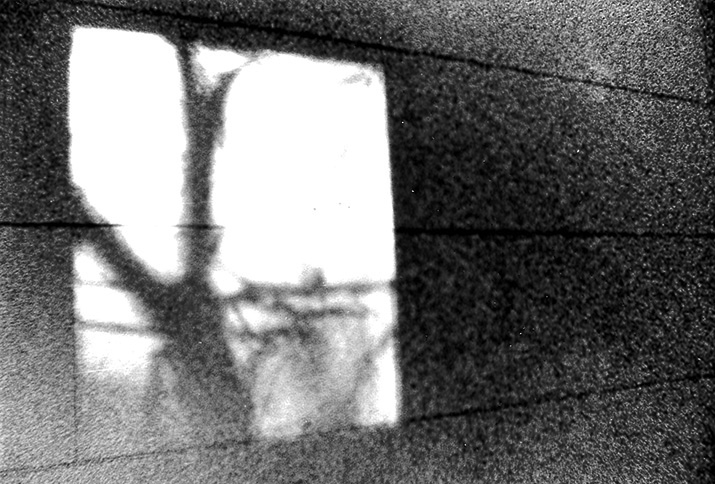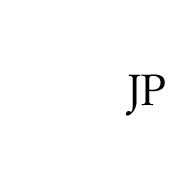
X:HAGIWARA Sakumi: COLLECTED WORKS

THE DREAM NECK GUILLOTINED HAGIWARA Sakumi
2017 has become the year of HAGIWARA Sakumi. Twenty-five of his works will be screened in four programs at the 2017 Image Forum Festival as “HAGIWARA Sakumi: COLLECTED WORKS.” From April 15th, 2017, “Hagiwara Sakumi Works 1974-2016” will be held at Maebashi Bungakukan. This exhibition will present many diverse works, including HAGIWARA Sakumi’s photography, magazines he edited, books he published as an essayist, and “objet” pieces based on the motif of “books.”
Works created by HAGIWARA Sakumi encompass various genres and methods. Looking at his background and how his career has unfolded, too, the diversity of his expression is clear. He was born in Setagaya Ward, Tokyo, in 1946. He attended university for only one day, the entrance ceremony, and spent the latter half of his teens working in a jazz café. In 1967 he was invited to participate in the formation of Tenjosajiki: A Laboratory of a Theatre Play. At first he performed on stage as an actor, and drew notice for his portrayal of Kinya, a boy raised by the gigolo Marie (MIWA Akihiro) who loved him more than his own child, in the company’s third play, LA MARIE-VISION. He later became the stage director of this group, overseeing a production of the same LA MARIE-VISION in which had previously appeared as an actor at an international theater festival held in Frankfurt, West Germany in 1969. He began making films while still a member of this group, and after his works TIME (1972) and KIRI (1972) received international acclaim he visited the United States at the invitation of the Department of State. After leaving Tenjosajiki: A Laboratory of a Theatre Play he founded Engine Room Inc. and started a magazine entitled “Bikkuri Hausu [Surprise House]” at Parco Publishing, forming a “parody culture” almost instantly and playing a key role in the emergence of the “Shibuya-kei” subculture. While continuing to run this company, he became an instructor at the Image Forum Institute of the Moving Image in 1978 and an educator at Tama Art University in 1981, roles in which he has fostered a large number of moving image makers and artists.
HAGIWARA Sakumi’s activities thus began with the theater and then expanded to include other pursuits such as moving image making, magazine publishing, and moving image education. At the root of all of these activities, however, we can see a mind engaged in overturning common sense concepts and surprising people through a variety of methods. This is aptly expressed in the title of his magazine, “Bikkuri Hausu [Surprise House].” A “Bikkuri Hausu [Surprise House]” is an amusement part attraction in the form of a house. Inside there are chairs like swings, and the entire room is covered in mirrors. When the ride begins, visitors sitting on the chairs have the illusion they are spinning a full 360 degrees. In fact it is the mirrored room that is spinning, and this illusion that shifts the sensibilities of the viewer in precisely the opposite direction of the phenomenon that is occurring is the defining characteristic of this attraction, and can indeed also be said to characterize the common element of expression shared by all of HAGIWARA Sakumi’s works.
The twenty-five moving image works included in these programs run the gamut from HAGIWARA’s early period works shot on film in the 1970s to his latest HD video work released in 2016. The works from his earliest period shown in the “X1 Capturing Time Alive” program present the audience with the two concepts of time characteristic of moving image media: real time and edited time. TIME is a work in which an apple is photographed once a day, and these individual shots are then put together into a twenty-four frame per second movie. Three hundred and sixty-five days of photographs are compressed into fifteen minutes, and the apple is carbonized before our eyes. The next film HAGIWARA made, KIRI, presents roughly seven minutes of footage shot in the mountains of Nasu in real time. The shot lasts only seven minutes, but within that short period a blanket of fog suddenly lifts, and in the clear sunlight a mountainous landscape looms into view. While the methods used are completely opposite (compressing time through a photographic technique, shooting in real time with no edits), in both cases the objects being shot undergo extreme changes. Here we see demonstrations of the defining characteristic of the expression of time in moving images.
After these works, as is illustrated by the program “X2 From Film to ‘Kiraism,’” HAGIWARA began to focus on the flickering of light. In The Dream Neck Guillotined, shadows cast by a tree on the walls of a room are recorded at various points in time. In WHAT I SAW ON SUNDAY, a work not screened in this program, the rebounding of light toward the ceiling of a room is also photographed and collected in a similar way. HAGIWARA then made The Wind Forgets the Trees Daughter, Kiraism, and Travel for Kiraism, works that seem to be addressing the reason for engaging in such activities. Through these works he shows that the flickering of light is cinema itself. He then further summarizes the essence of cinema in Sewing Machine and Locomotive. From around the period in which these works were created, HAGIWARA began to create narratives by inserting his own words into moving images rather than using moving images to present phenomena. As is shown in programs “X3 Thought Circuits of Moving Images” and “X4 Everyday an Adventure,” this was a shift towards the creation of essays using moving images. This can also be seen as having been connected to a change in media from film to video. In particular, this shift can presumably be tied to HAGIWARA’s works becoming mainly digital videos as the process of video becoming digital reached the level of the general public around the year 2000.
I have been involved in the production of HAGIWARA Sakumi’s moving image works since around the time of this transition to digital media. I would like to say a few words about how these works are made. Every year, HAGIWARA presents me with a somewhat vague composition on a set theme. I think about locations and shooting methods based on this composition, and then shoot some video footage. I roughly organize the raw footage I have shot on my Mac, and send HAGIWARA a compressed video file. After looking at the footage I’ve sent him, HAGIWARA rethinks the composition. After seeing the new composition, I once again decide on locations and shooting methods and then shoot additional footage. This process is repeated tens of times, and the work is completed. HAGIWARA Sakumi says that a work is not “incomplete” but “non-complete.” The process of creation is always continuing, and there is only the completion of the point at which it is shown. The work continues to be made between one screening and the next. This method is much easier to employ using digital media that it would be with film. It can perhaps be said that this approach is now being used after the transition to digital media made it possible.
So have HAGIWARA Sakumi’s works today changed completely in comparison to his earliest films? No, they haven’t. For example, the “Water in My Eye” series addresses HAGIWARA’s own loss of sight as a result of age-related macular degeneration, but this is not a visual essay presented only as a “self-documentary.” A video camera is equipped with an underwater case, and images of the world seen through water are created by pouring liquid in front of the lens. Images that appear to an eye that has lost its sight are created, and viewers are presented with a new visual experience. In this way a phenomenon is made into an image, and the audience’s sensibilities are shaken. This is a method of expression that all of HAGIWARA Sakumi’s moving image works have in common.
ISHIHARA Yasuomi (Artist, Associate professor at Taisho University)
HAGIWARA Sakumi
Born in 1946. Moving image maker, stage director, essayist. Participated as an actor in the formation of “Tenjosajiki: A Laboratory of a Theatre Play,” a theater group organized by TERAYAMA Shuji. Has been engaged in activities of expression that transcend the boundaries of fields like experimental film, video art, woodblock printing, and photography since the 1970s. Director of the Maebashi Bungakukan, Professor Emeritus, Tama Art University.
X1 CAPTURING TIME ALIVE
8works59min
Moving image makers freely control time, and HAGIWARA Sakumi’s approach is to coolly present time that has been captured alive. This program features eight works, including TIME, which can be considered the culmination of HAGIWARA’s lifelong efforts, the the one-shot masterpiece KIRI, and TRANSLATE, a film that transforms time into memory.
TIME HAGIWARA Sakumi / 16mm / 15min. / 1971
KIRI HAGIWARA Sakumi / 16mm / 7min. / 1972
TIME TABLE 17 JUNE 1973 HAGIWARA Sakumi / 16mm / 5min. / 1973
DIAGRAM HAGIWARA Sakumi / 16mm / 10min. / 1973
RE-PRINT HAGIWARA Sakumi / 16mm / 3min. / 1977
SIGN VEHICLE HAGIWARA Sakumi / 16mm / 4min. / 1983
TRANSLATE HAGIWARA Sakumi / 16mm / 5min. / 1984
COMMEMORATIVE PHOTOS HAGIWARA Sakumi / 16mm / 10min. / 1990
Schedule
TOKYO:4/29 13:00,5/3 13:00 X1 program
KYOTO:5/17 13:45 X1 program
X2 FROM FILM TO “KIRAISM”
6works76min
“Why do people focus on a flickering light?” Returning from film to flickering. A program that analyses the primitive allure of films that appeal to human instinct, from 1972’s The Dream Neck Guillotined to Kiraism and Travel for Kiraism. Sewing Machine and Locomotive, a film inspired by the first ever motion picture, The Train Arrives, will also be screened.
THE DREAM NECK GUILLOTINED HAGIWARA Sakumi / 16mm / 3min. / 1972
BUTTERFLY HAGIWARA Sakumi / 8mm / 3min. / 1973
THE WIND FORGETS THE TREES DAUGHTER HAGIWARA Sakumi / digital / 15min. / 2006
KIRAISM HAGIWARA Sakumi / digital / 20min. / 2008
TRAVEL FOR KIRAISM HAGIWARA Sakumi / digital / 20min. / 2009
SEWING MACHINE AND LOCOMOTIVE HAGIWARA Sakumi / digital / 15min. / 2015
Schedule
TOKYO:4/29 16:00, 5/3 16:00 X2 program
KYOTO:5/17 16:30 X2 program
X3 THOUGHT CIRCUITS OF MOVING IMAGES
5works79min
Film is not only a form of expression, but also a means of thought. The act of creating moving images itself involves inflating image after image. A program of cinematic essays inspired by motifs such as doors, books, mailboxes, and Rembrandt self-portraits. Thoughts on fiction are developed in Correspondence 7.
DRAMA HAGIWARA Sakumi / 16mm / 3min. / 1974
TALE OF POST HAGIWARA Sakumi / digital / 15min. / 2007
RAIN LISTENING HAGIWARA Sakumi / digital / 15min. / 2011
EVERYTHING IS A BOOK HAGIWARA Sakumi / digital / 15min. / 2011
CORRESPONDENCE 7 KAWANAKA Nobuhiro + HAGIWARA Sakumi / 16mm / 31min. / 1996
Schedule
TOKYO:4/29 19:00, 5/4 13:00 X3 program
KYOTO:5/18 13:45 X3 program
X4 EVERYDAY AN ADVENTURE
6works80min
A rumination on the filmmaker’s mother, the author HAGIWARA Yoko, After My Mother’s Passing is a cinematic essay that clings to the swift flow of time. The three films in the Water in My Eye series, a sequence of works with a left eye that ends up being blind as their motif, are screened together. “The theme of this three-part work is transitioning from I to we.” A moving image artist makes even his own body a photographic subject.
FEB.10 HAGIWARA Sakumi / 16mm / 5min. / 1988
AFTER MY MOTHER’S PASSING HAGIWARA Sakumi / digital / 15min. / 2005
WATER IN MY EYE HAGIWARA Sakumi / digital / 15min. / 2012
WATER IN MY EYE 2 -AKIMARU AND HARUMARU- HAGIWARA Sakumi / digital / 15min. / 2013
WATER IN MY EYE 3 -AKIMARU RUNAWAY- HAGIWARA Sakumi / digital / 15min. / 2014
SOMETHING FROM THE LEFT HAGIWARA Sakumi / digital / 15min. / 2016
Schedule
TOKYO:4/30 13:00, 5/4 16:00 X4 program
KYOTO:5/19 11:00 X4 program






